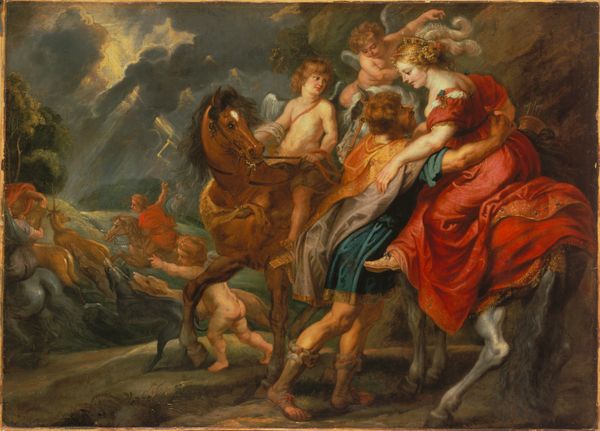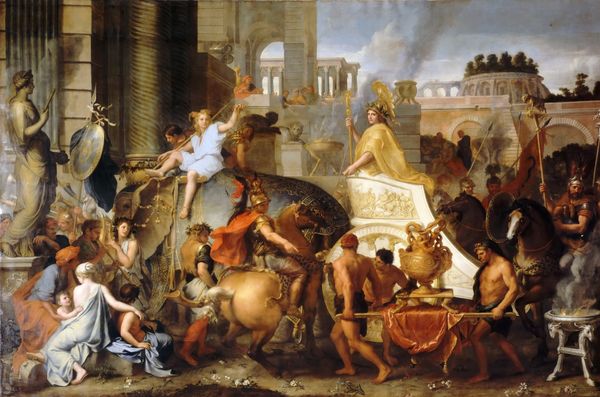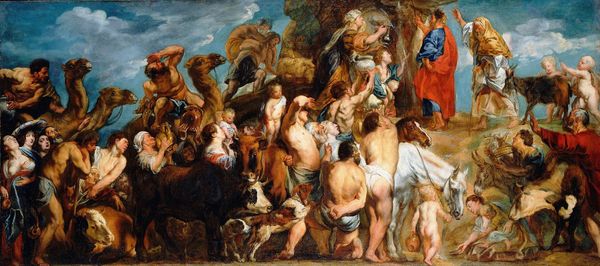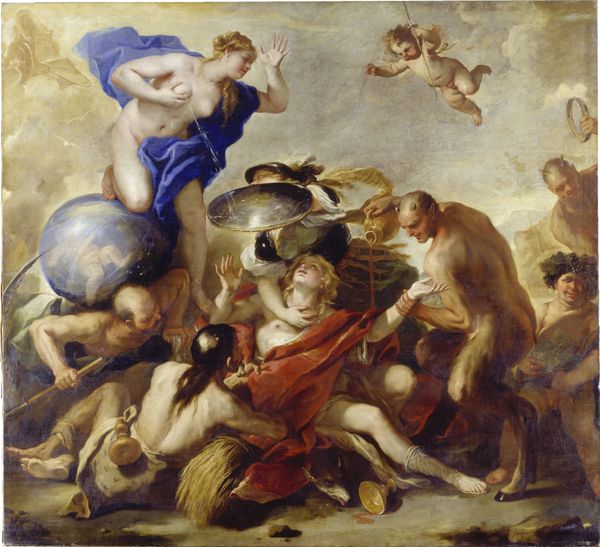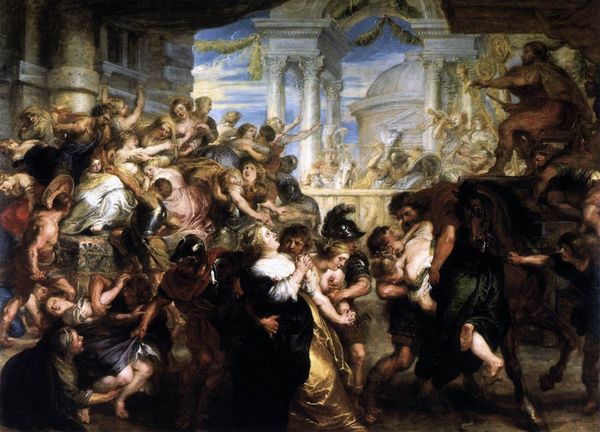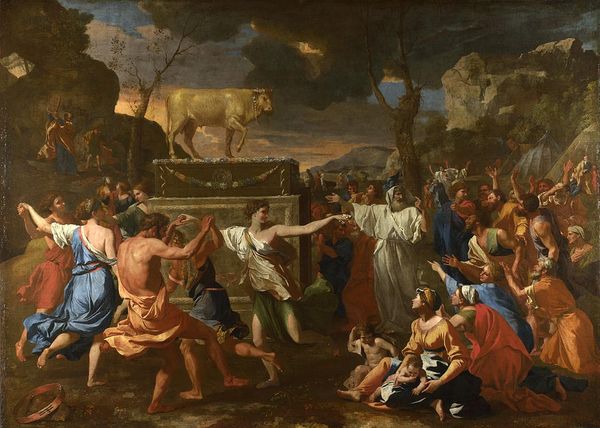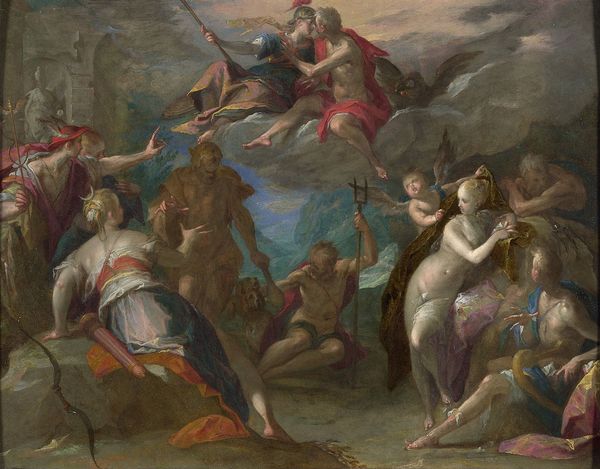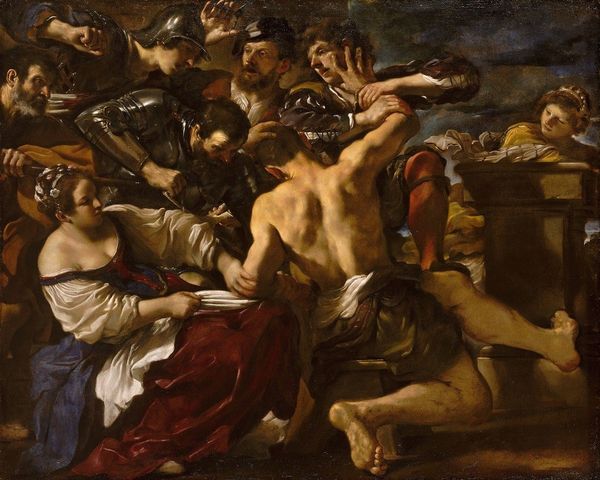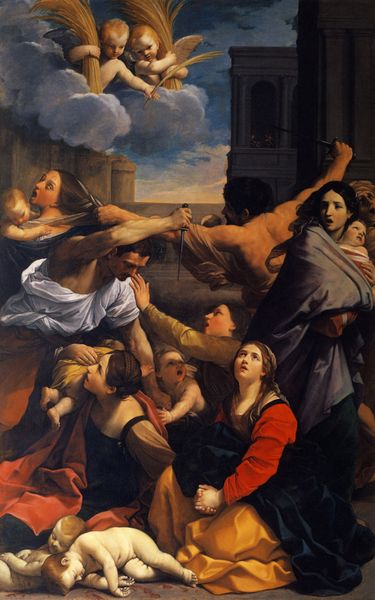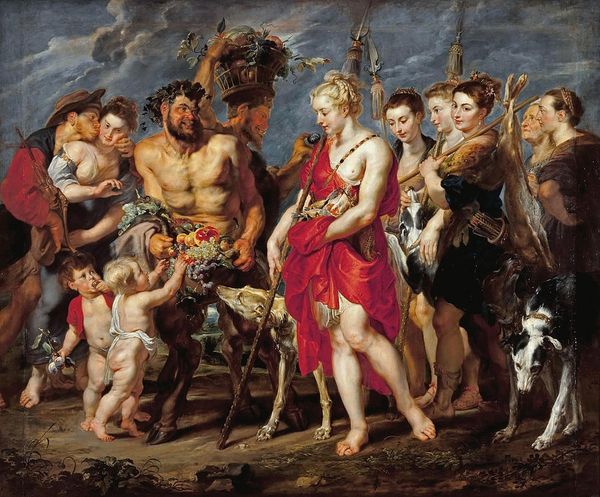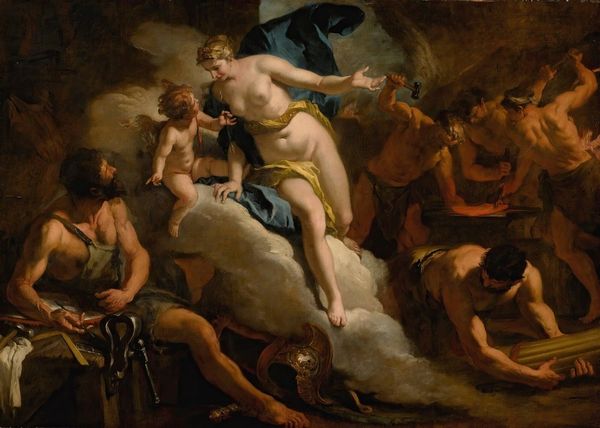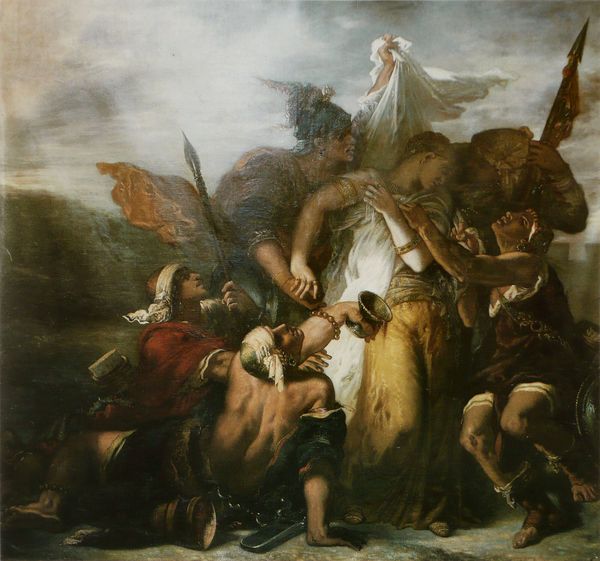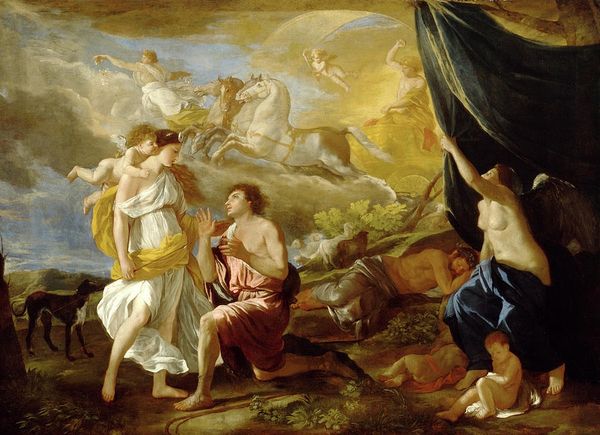
painting, oil-paint
#
portrait
#
allegory
#
baroque
#
painting
#
oil-paint
#
mannerism
#
figuration
#
oil painting
#
mythology
#
painting painterly
#
history-painting
Copyright: Public domain
Curator: The Museo del Prado holds this dramatic depiction, “David, Winner of Goliath,” attributed to Palma il Giovane. What strikes you upon first glance? Editor: Immediately, it's the sheer chaos of it all. The loose brushstrokes contribute to a sense of unrest, almost anxiety. There’s a struggle visible in the making of it. Curator: It’s interesting that you pick up on the artist’s process so quickly. Look closer at how Palma renders fabric; there’s an urgency that speaks to the context of the time. Mannerism was fading, and the Baroque style’s dramatic flair was rising in popularity and it really translated here, a stylistic tug-of-war played out through brushwork. Editor: I see the way Palma deploys figuration in what becomes almost a political strategy here. The imagery of triumph becomes completely co-opted within courtly settings; valor becomes intertwined with dynastic power. Look at those Roman soldiers—the painting becomes this staging ground to legitimize dominance, blurring sacred narrative with terrestrial rule. Curator: That's a astute observation. Considering the lack of a firm creation date for this oil painting, its location is very telling, no? Its position at the Prado infers its social function, it operates in conversation with artwork under the patronage of Spanish royalty, and how this speaks volumes about shifting artistic commissions during that period. What’s more is it may serve the explicit function to teach virtue! Editor: Precisely, a form of state-sanctioned messaging! The materials themselves–oil paints that offered this painterly style to express such emotion in that period–allowed the canvas to operate almost like propaganda! Each swash of color, loaded with intent. Curator: I am convinced the composition serves as more than aesthetic representation. A window onto the socio-political forces that helped create art in that time and how it functions. Editor: Seeing through the labor, context, and the raw material allows us to look at what purpose that creation would eventually serve in the courts of Europe. Curator: Exactly, making us look beyond subject matter and considering those cultural functions shaping art back then, how far removed they seem today!
Comments
No comments
Be the first to comment and join the conversation on the ultimate creative platform.
